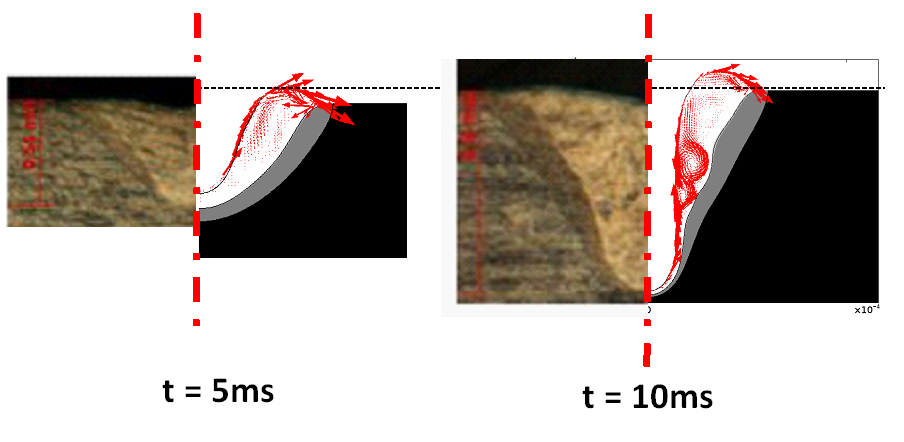Keywords
Welding, fluid mechanics, heat transfer, laser, phase change, free-surface flow, capillary effects, Marangoni effects
Context / Goal
The pulsed laser welding process is used by industry to limit residual deformations while ensuring a high quality of welding. In order to understand the preponderant mechanisms responsible for the melting zone formation and to improve the process, a numerical model is built.
The objectives are the following:
- to predict the melting zone shape (width and depth) only using operating conditions and material properties (predictive model),
- to understand the defects formation, specifically porosities, in order to propose solutions to avoid them.
SIMTEC's Achievements / Results
To meet client needs, a thermo-hydraulic model of one laser impact is performed via the COMSOL Multiphysics® software. It takes into account, in a single model, the different physical phenomena governing the digging kinetic and the capillary closure as well as the melted zone shape formation, which are:
- laser/matter interaction
- thermodynamic phase changes (melting and vaporization),
- recoil pressure generated by vapor ejection,
- liquid/vapor interface deformation taking into account capillary effects (Laplace and Marangoni).
After resolution of this strongly coupled problem, a numerical validation is performed (convergence studies of the temporal and spatial discretizations). A confrontation between experimental results (post–mortem micrographs) on the left and numerical results on the right, is illustrated below for two different durations of impact:
The model permits precise estimation of the dimensions of the molten zone and provides help for industrial designers. Also, it allows the description of the mechanisms of porosity formation that may appear in specific welding conditions, as shown here:
After identifying the mechanisms responsible for the creation of porosities, a method for limiting their formation by optimizing the duration and the intensity of the laser impact has been tested and validated numerically.



